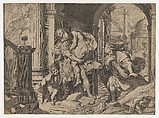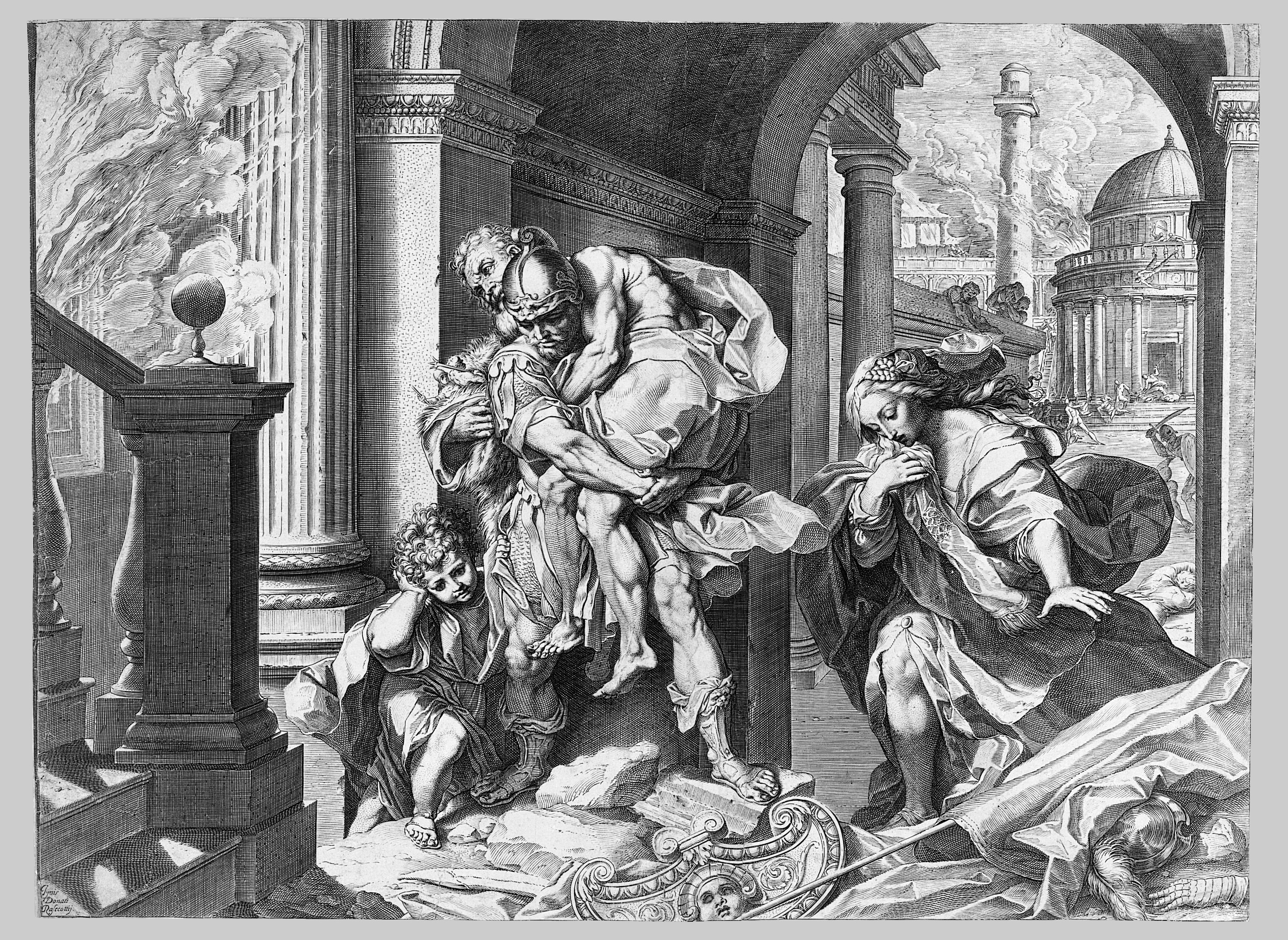Aeneas and his family fleeing Troy
Agostino Carracci Italian
After Federico Barocci Italian
Publisher Donato Rasicotti Italian
Not on view
Understanding that defending the burning city of Troy was futile, Aeneas fled with his aged father Anchises on his back. Anchises carried the penates (household gods), and Aeneas held his son Ascanius by the hand. His wife Creusa followed a few steps behind but was lost in the confusion of battle. The buildings of Troy seen here recall monuments in Rome, which was possibly an intentional detail to foreshadow Aeneas' fate.
Federico Barocci produced two paintings of this subject. The earlier one was already in Prague when Agostino created this engraving, while the second version postdates it by three years. Another printmaker Cornelis Cort reproduced one of the paintings in a print. Agostino's biographer Malvasia tells us that Agostino created this engraving 'for study, and to please himself.' Agostino did not however please Barocci, to whom he sent two impressions of the engraving and received a rather nasty letter in return. It is hardly surprising that Barocci was unhappy, given that his paintings are characterized by softness and subtle coloristic changes rather than the sculptural form and bulging muscles that Agostino emphasized in his print. In previous engravings, Agostino had adapted the manner of Cornelis Cort to reproduce the coloristic qualities of Venetian painting. In this work, he turned for the first time to the example of the Dutch engraver Hendrick Goltzius, perhaps in response to Goltzius' 'Rest on the Flight', published the previous year, which masterfully replicates Barocci's painting style without copying a specific painting. Yet Agostino did not imitate the flowing and dissolving network of swelling lines that Goltzius had used to blur contours and blend tones, but rather the emphatic and exaggerated burin line that Goltzius had earlier applied to heroic subjects and Roman statues (17.37.59). Involved with his brother and cousin in the reform of painting, Agostino was known for 'correcting' his models when he engraved them, in this case making a heroic subject even more pronounced through firmer contours that recall ancient sculpture.
Due to rights restrictions, this image cannot be enlarged, viewed at full screen, or downloaded.
This artwork is meant to be viewed from right to left. Scroll left to view more.





